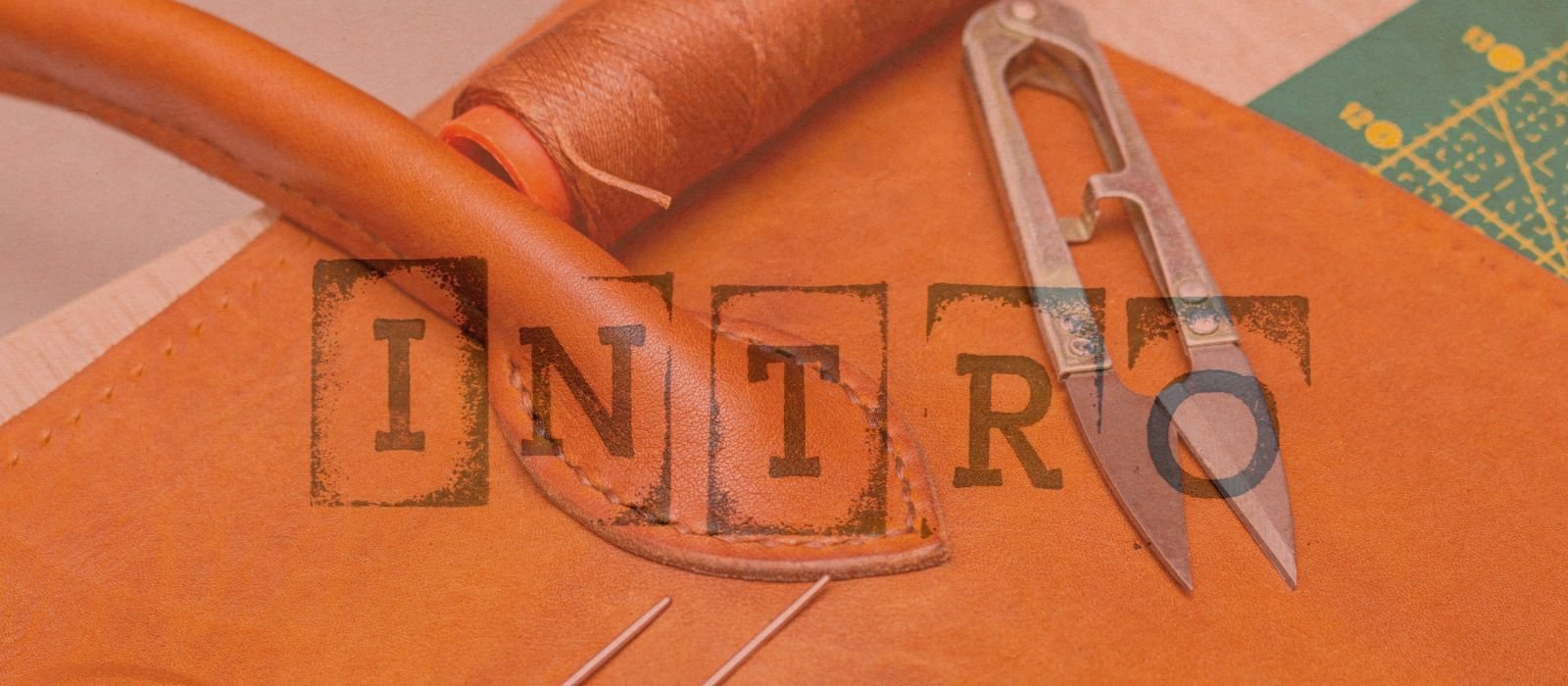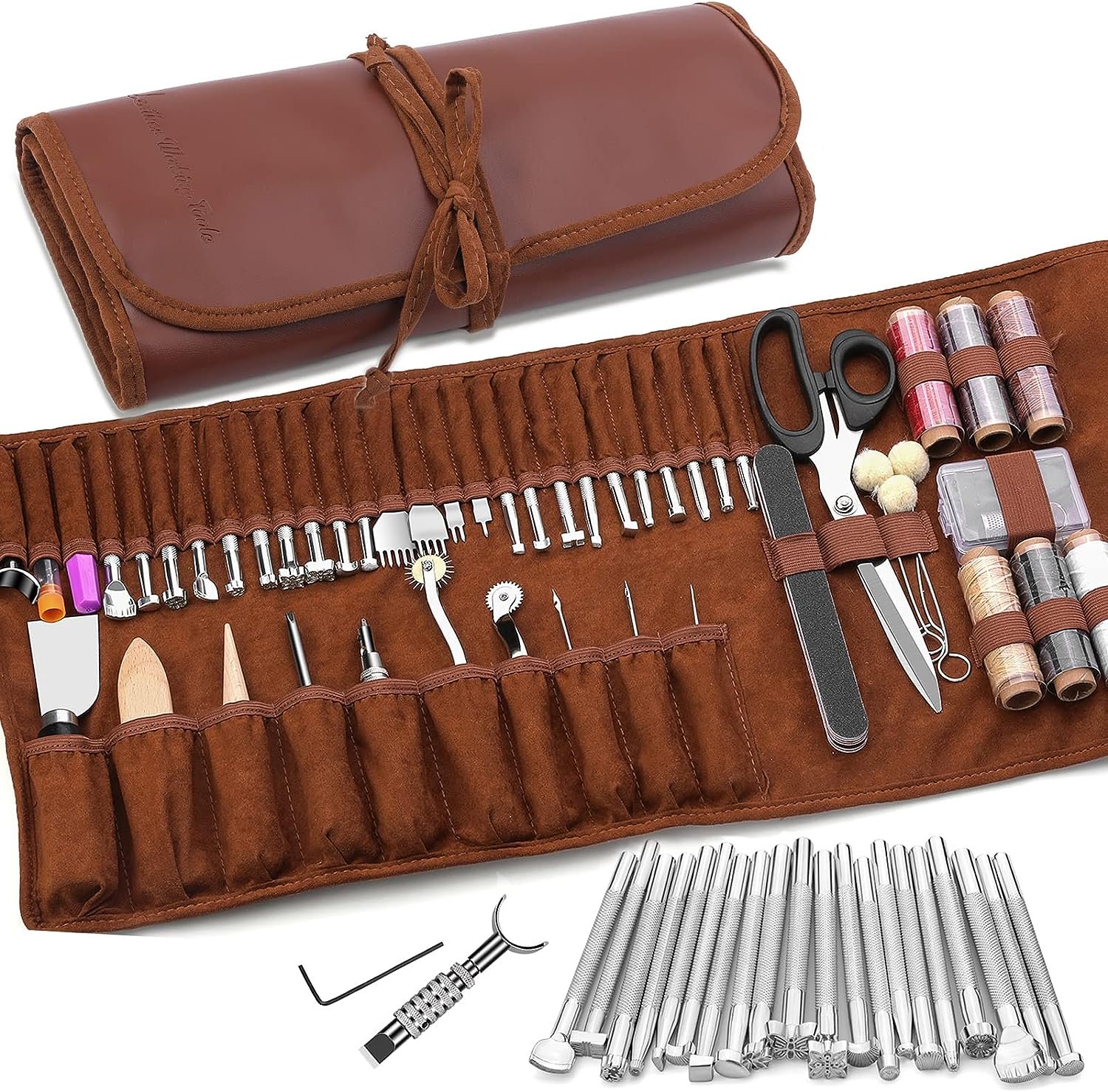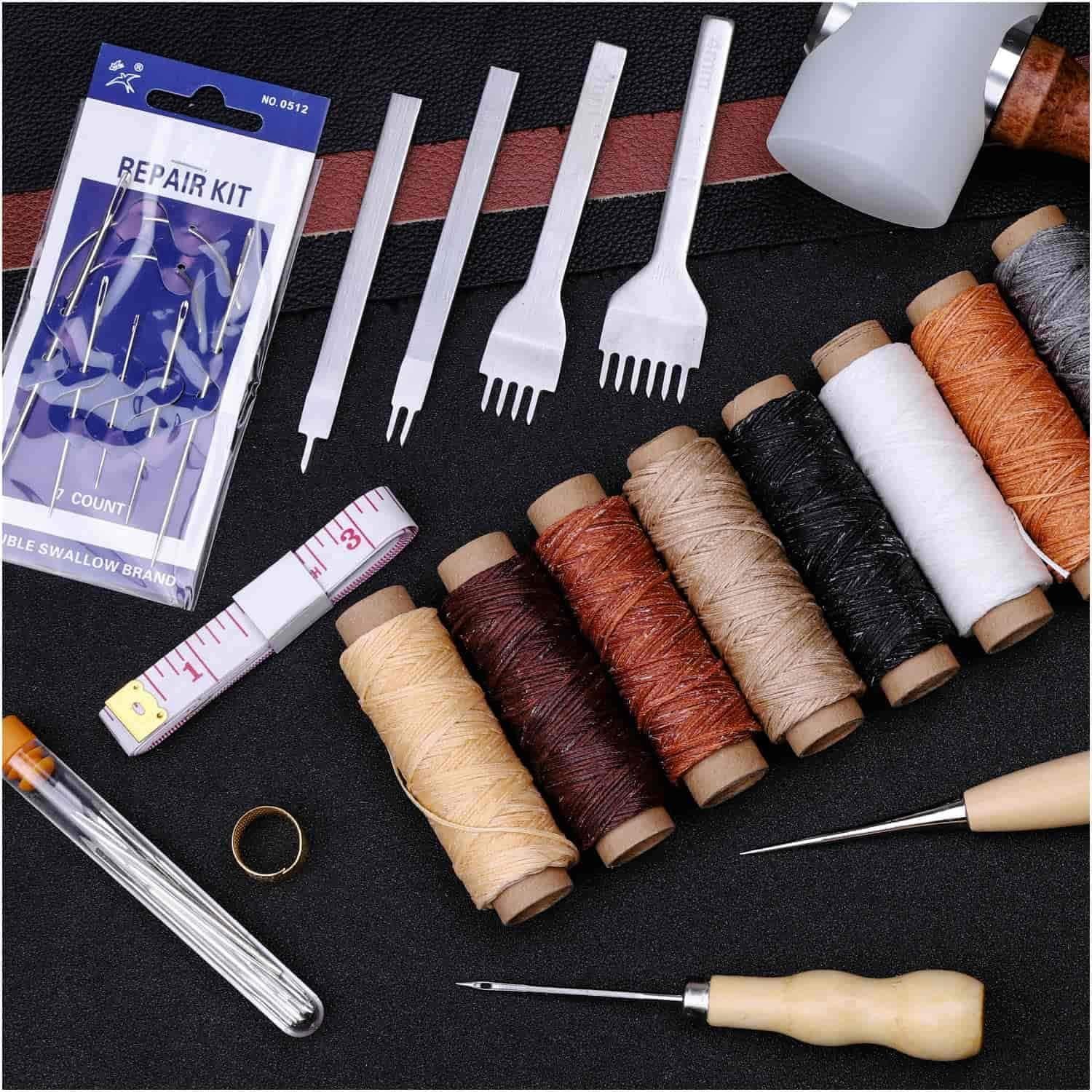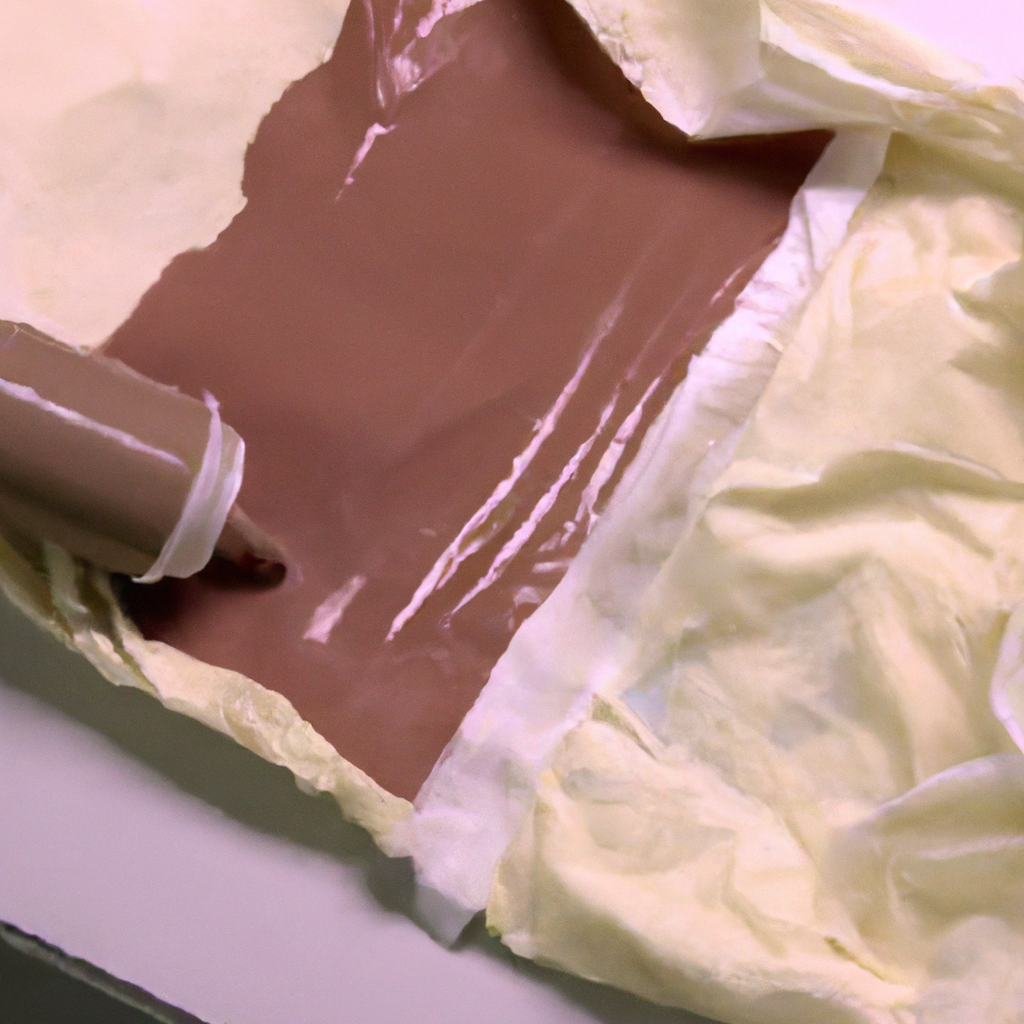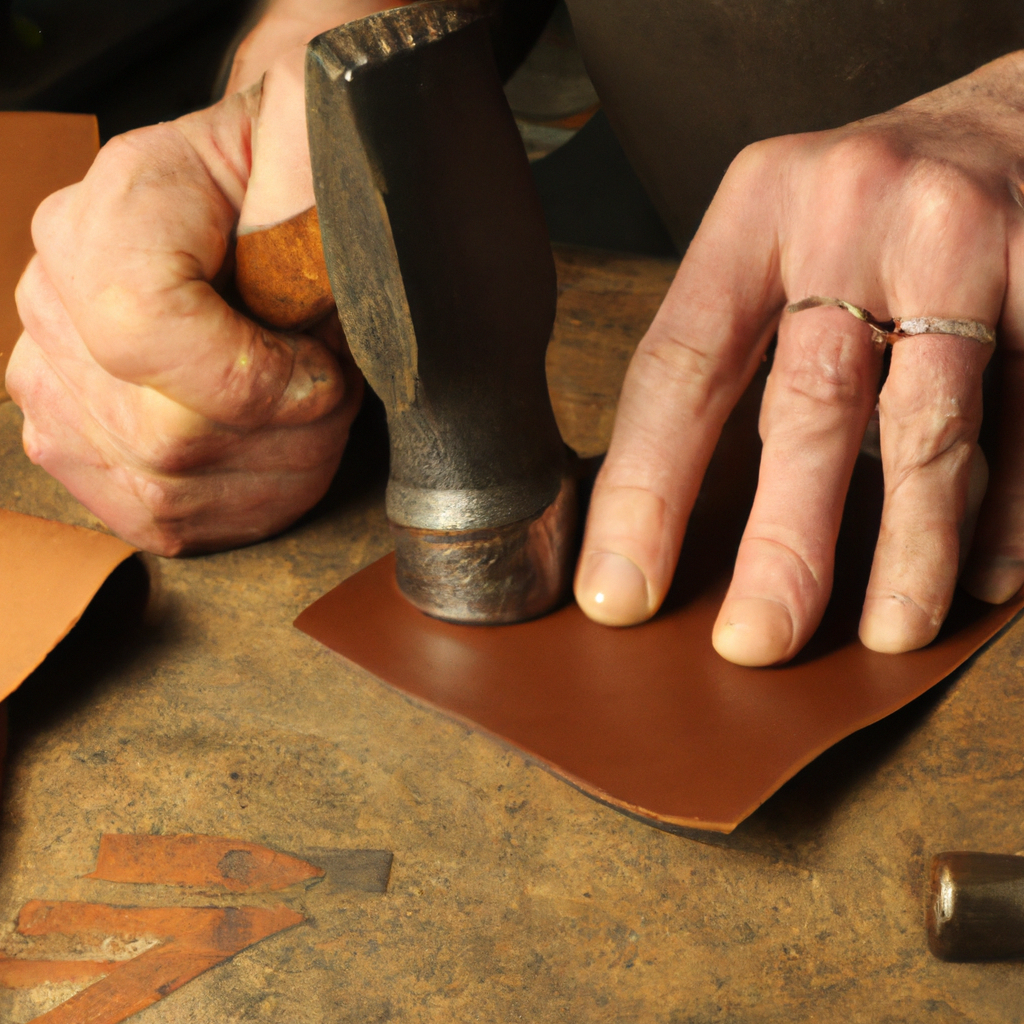In the world of leather crafting, one of the common dilemmas faced by beginners is determining how tight their stitching should be on their projects. Finding that sweet spot between too loose and too tight can make a significant difference in the final outcome of your work. Whether you’re sewing a wallet, a bag, or a pair of shoes, striking the right balance in your stitching ensures longevity and durability. In this article, we’ll explore the importance of tight stitching and provide some helpful tips to achieve the perfect tension for your leather projects. So, let’s dive in and discover the secrets to mastering the art of stitching!

Importance of Proper Stitching
Proper stitching is a crucial aspect of leather crafting that should never be overlooked. It plays a significant role in determining the strength and durability of your leather products, as well as their overall aesthetics and functionality. Whether you’re crafting bags, shoes, belts, or garments, the quality of your stitches can make a world of difference.
Strength and Durability
One of the primary reasons why proper stitching is essential is its impact on the strength and durability of your leather projects. A well-executed stitch ensures that the different components of your leather item are securely held together, minimizing the risk of them coming apart over time. By using the right techniques and achieving the appropriate tightness, you can create products that will stand the test of time and maintain their structural integrity even with regular use.
Aesthetics
While functionality is crucial, the aesthetics of your leather projects should never be underestimated. Proper stitching can greatly enhance the visual appeal of your creations. Neat and even stitches showcase your attention to detail and craftsmanship, giving your products a polished and professional finish. On the other hand, sloppy or irregular stitching can significantly detract from the overall appearance, making even the most well-designed item look unappealing. By ensuring the tightness of your stitches matches the desired aesthetic, you can elevate the visual impact of your leather projects.
Functionality
In addition to strength and aesthetics, proper stitching greatly influences the functionality of your leather items. The tightness of your stitches can affect the flexibility and movement of the leather, as well as its ability to withstand stress and strain. By achieving the right stitch tightness, you can ensure that your bags have strong and secure closures, your shoes have sturdy soles, and your garments have durable seams that can withstand regular wear and tear. The functionality of your leather projects goes hand in hand with the quality of your stitching.
Factors to Consider
When it comes to determining the appropriate tightness of your stitching, several factors should be taken into consideration. These factors include the type of leather you’re working with, the specific project you’re undertaking, the thread used, the needle size, and the stitching technique employed. By considering these factors, you can tailor your stitching approach to best suit the unique characteristics of your leather and the requirements of your project.
Type of Leather
Different types of leather have varying degrees of thickness, density, and flexibility. These factors directly impact the ideal tightness of your stitches. For thinner and more pliable leathers, such as lambskin or deerhide, a tighter stitch is generally preferred. It helps ensure that the stitches securely hold the leather together and prevent any potential stretching or distortion. On the other hand, thicker and stiffer leathers, like vegetable-tanned cowhide or full-grain leather, may require stitches with slightly looser tension to accommodate the material’s natural rigidity.
Type of Project
The purpose and usage of your leather project also play a role in determining the appropriate stitch tightness. For items that will undergo heavy use or bear significant weight, such as bags or belts, stronger and tighter stitching is essential to ensure their longevity and durability. However, projects where flexibility and comfort are crucial, such as garments or shoes, may require stitches that allow for more movement and flexibility. Understanding the intended use of your leather item will guide you in selecting the appropriate stitch tightness.
Thread
The type of thread you select for your stitching can impact its tightness and overall strength. Threads come in various materials, such as nylon, polyester, cotton, or waxed linen, each with its own characteristics. Some threads may stretch more than others, affecting the tension of your stitches. Additionally, thicker threads may require looser stitches to accommodate their size, while thinner threads may allow for tighter stitches. Consider the properties of your thread and how it interacts with your chosen leather when determining the tightness of your stitches.
Needle Size
The size and type of needle you use also have an impact on the tightness and overall quality of your stitches. Different needle sizes are designed for specific thread thicknesses and leather types. Using a needle that is too large for your thread or leather can result in loose stitches, while using a needle that is too small can lead to tight and overly stressed stitches. Matching the appropriate needle size to your thread and leather will help achieve the right stitch tightness and enhance the overall integrity of your leather project.
Stitching Technique
The stitching technique you employ is another crucial factor in determining the tightness of your stitches. Different techniques, such as hand stitching, machine stitching, or saddle stitching, have varying effects on stitch tightness. Hand stitching allows for more control and precision, allowing you to adjust the tension of each stitch as you go. Machine stitching, on the other hand, may require more careful calibration to achieve consistent tightness. Saddle stitching, a traditional technique often used in higher-end leatherwork, creates inherently strong and secure stitches, providing a balanced tightness throughout the entire seam. Consider the specific technique best suited for your project and its impact on stitch tightness.

Testing Stitching Tightness
Once you’ve completed your stitches, it’s essential to test their tightness to ensure they meet the desired standards for your leather project. Several methods can be employed to evaluate the tightness of your stitches, including pull tests, flexibility tests, and visual examination.
Pull Test
The pull test is a simple yet effective way to gauge the tightness of your stitches. Grab both ends of your stitched seam and gently pull in opposite directions. The stitches should hold firmly without any significant looseness or slippage. If the stitches easily pull apart, they may be too loose and require adjusting. Conversely, if the leather appears to be under excessive tension or the stitches start to break, they may be too tight and need to be loosened slightly.
Flexibility Test
A flexibility test can help determine if your stitches allow appropriate movement and dexterity for your leather item. Bend and flex the stitched area, paying attention to how the stitches respond. They should maintain their integrity without putting excessive strain on the leather or causing any undue stress. If the stitches become distorted or if the leather shows signs of stretching or tearing, it may indicate that the stitches are either too tight or too loose. Adjust accordingly to achieve the desired level of flexibility.
Visual Examination
A visual examination is an essential step in assessing the tightness of your stitches. Take a close look at the stitches and the surrounding leather. They should appear even, consistent, and without any noticeable gaps or irregularities. Loose stitches may be visibly puffy or have a looser appearance, while overly tight stitches can cause the leather to pucker or distort. By visually inspecting your stitches, you can identify any areas that may require adjustment for optimal tightness.
Different Approaches to Stitch Tightness
The appropriate tightness of your stitches can be achieved through various approaches, depending on your preferences and the specific requirements of your leather project. Hand stitching, machine stitching, and saddle stitching are three common methods that offer different benefits and levels of control over stitch tightness.
Hand Stitching
Hand stitching allows for meticulous control over stitch tightness, making it an excellent choice for smaller and more intricate leather projects. With hand stitching, you have the ability to adjust the tension of each individual stitch as you go, ensuring a consistent and desired level of tightness throughout the entire seam. This method is ideal for those seeking a high level of craftsmanship and attention to detail in their leatherwork.
Machine Stitching
Machine stitching is a faster and more efficient method that can be suitable for larger or production-oriented leather projects. Most sewing machines offer adjustable tension settings that allow you to control the tightness of your stitches. By calibrating the tension correctly, you can achieve consistent and reliable stitch tightness throughout your leather items. Machine stitching is commonly used in the manufacturing of leather goods and provides a uniform appearance.
Saddle Stitching
Saddle stitching is a traditional technique often employed in high-end leathercraft. It involves the use of two needles and a single thread that intertwines between the stitches on either side of the leather. Saddle stitching creates inherently strong and secure stitches while maintaining an even tightness throughout the entire seam. Although it requires more skill and patience, saddle stitching offers durable and visually pleasing results. This technique is particularly popular for handcrafted leather bags, wallets, and other accessories.

Common Stitching Problems
In the process of leather stitching, a few common problems can arise, affecting stitch tightness and overall quality. Being aware of these issues will help you identify and address them promptly, ensuring that your leather projects turn out as intended.
Loose Stitching
One of the most common stitching problems is loose stitching. This occurs when the thread is not sufficiently tensioned or the stitches are not tightly pulled together. Loose stitching can result in weakened seams and an increased likelihood of the stitches unraveling or coming apart. It can also create a less visually appealing finish. Monitoring your thread tension and verifying the tightness of your stitches during the stitching process will help prevent loose stitching. Adjustments can be made as needed to ensure each stitch is secure and properly tightened.
Overly Tight Stitching
While loose stitching is undesirable, overly tight stitching can also present its own set of issues. When stitches are excessively tight, they can cause the leather to distort, pucker, or even tear. Over time, the stress placed on the leather by excessively tight stitches can weaken the material and reduce its lifespan. Carefully evaluate the tension of your stitches during the stitching process, mindful of the specific leather type and project requirements. Striking the right balance between tightness and flexibility is crucial to avoid overly tight stitching.
Uneven Stitching
Uneven stitching refers to stitches that are not consistently spaced or of different tightness along the seam. This can give your leather project a messy and unprofessional appearance. Uneven tension can result from inconsistent hand stitching or an improperly calibrated sewing machine. Ensure that you maintain a steady rhythm and spacing while hand stitching. If using a sewing machine, regularly check and adjust the tension settings to guarantee even stitch tightness. Taking the time to achieve consistent and well-spaced stitches will greatly enhance the overall quality of your leatherwork.
Tips for Achieving the Right Stitch Tightness
Achieving the right stitch tightness may require some practice and attention to detail. The following tips will help you develop the necessary skills and techniques to consistently produce high-quality stitches that meet the desired tightness criteria.
Practice
As with any craft, practice plays a vital role in improving and refining your stitching skills. Take the time to practice different stitching techniques, experiment with various threads and needle sizes, and familiarize yourself with the behavior of different leathers. Through practice, you’ll develop a better understanding of how stitch tightness impacts the strength and aesthetics of your leather projects.
Maintain Consistency
Consistency is key when it comes to achieving the right stitch tightness. Ensure that your stitch spacing remains uniform throughout the entire seam, preventing any areas of loose or tight stitching that can compromise the integrity of your leather item. Pay attention to your hand movements, thread tension, and needle placement to maintain a consistent stitch tightness.
Use Proper Tension
Proper tension is essential in achieving the right stitch tightness. Whether you’re hand stitching or using a sewing machine, understanding and adjusting the tension settings is crucial. Start with a moderate tension and make small adjustments as needed, testing the stitches periodically to check the tightness. Regularly evaluate the tension throughout the stitching process to ensure consistent and appropriate tightness.
Choose the Right Thread
Selecting the right thread for your leather project is essential for achieving the desired stitch tightness. Consider the thickness and strength of the thread, as well as its elasticity and stretch properties. Thicker threads may require looser stitching, while thinner threads may allow for tighter stitches. Experiment with a variety of threads until you find the one that best suits your desired stitch tightness and aesthetic.
Select Appropriate Needle Size
Matching the appropriate needle size to your thread and leather is vital in achieving optimal stitch tightness. Different needle sizes accommodate different thread thicknesses and densities. Using a needle that is too large may result in loose stitching, while using a needle that is too small may lead to overly tight stitches. Test different needle sizes with your chosen thread and leather to identify the optimal combination for achieving the desired stitch tightness.

Considerations for Specific Leather Projects
Different types of leather projects have specific requirements, and understanding these considerations will help you determine the appropriate stitch tightness for each category.
Bags and Purses
Bags and purses typically require stronger and tighter stitching due to their higher weight-bearing capacity and frequent use. The stitches must be able to withstand the weight of the contents and the stress of daily wear. Consider using thicker threads and appropriate needle sizes to achieve the necessary strength. The stitch tightness should be tailored to the leather type and thickness, ensuring durability without compromising the overall flexibility and aesthetics of the bag or purse.
Shoes and Boots
For shoes and boots, stitch tightness should strike a balance between strength and flexibility. The stitches must be tight enough to withstand the demands of various movements and pressures but also allow for comfortable wear. Consider using techniques such as saddle stitching for added durability. Matching the thread thickness to the leather’s thickness and selecting appropriate needle sizes will contribute to achieving the desired stitch tightness for shoes and boots.
Belts and Accessories
Belts and accessories serve functional and decorative purposes, and their stitching should reflect those aspects. Stitch tightness should be strong enough to ensure durability but not compromise the overall appearance and comfort. Striking a balance between tightness and flexibility is crucial to create belts and accessories that can withstand regular use while still retaining their aesthetic appeal. Experiment with different stitching techniques and thread thicknesses to find the ideal stitch tightness for each unique design.
Garments
When stitching garments, the stitch tightness should prioritize comfort and flexibility. Garments require stitches that allow for a full range of movement without causing any discomfort or restriction. The tension of the stitches should be carefully adjusted to accommodate the specific fabric weight and stretch characteristics. Consider using thinner threads and appropriate needle sizes to create smooth and even seams that maintain the garment’s drape and fit.
Furniture Upholstery
Furniture upholstery demands sturdy stitching that can withstand years of use and potential pulling or stretching. The stitches should be tight enough to hold the upholstery fabric securely in place while maintaining the shape and structure of the furniture. Consider using heavier threads and larger needle sizes to achieve appropriate stitch tightness. Regularly test the tension and tightness of the stitches throughout the upholstery process to ensure consistent and reliable results.
Choosing the Right Stitching Technique
Selecting the appropriate stitching technique is vital in achieving the desired stitch tightness for your leather projects. Different techniques offer varying degrees of control and inherent strength, allowing you to tailor your stitching approach to match your specific requirements.
Lock Stitch
The lock stitch is a popular technique characterized by two sets of interlocking threads, top and bottom, that pass through the layers of leather. This technique ensures strong and secure stitching while offering control over stitch tightness. Lock stitches can be executed by hand or machine, depending on the specific leather project. This versatile technique provides reliable and visually appealing results, making it suitable for a wide range of applications.
Backstitch
The backstitch is a hand stitching technique known for its strength and tightness. It involves creating overlapping stitches that form a backstitch line. This technique is particularly suitable when a high level of tightness and durability is required, as seen in leather belts or bags. Backstitching allows for precise control over stitch tightness, ensuring secure and long-lasting seams. While time-consuming, the backstitch is well worth the effort for its impressive results.
Running Stitch
The running stitch is a simple yet versatile stitching technique that can accommodate different levels of tightness. It involves passing the needle and thread through the layers of leather in a continuous line. Running stitches can be evenly spaced or varied in length, allowing for adjustment in stitch tightness. This technique is suitable for projects where flexibility and ease of stitching are prioritized, such as garments or lighter accessories. By adjusting the spacing and tension of the running stitches, you can achieve the desired stitch tightness.
Blanket Stitch
The blanket stitch is commonly used for decorative purposes while also providing a reliable and secure seam. It involves a series of looped stitches that interlock along the edge of the leather. Blanket stitches can be executed by hand or machine, depending on the specific requirements of the project. This technique allows for different levels of tightness, as the tension can be adjusted by varying the distance between the stitches. The blanket stitch is often utilized in leather crafts where the aesthetics and visual appeal are of utmost importance.
Effect of Stitch Tightness on Leather
The tightness of your stitches has a direct impact on the leather itself, affecting its appearance, behavior, and overall durability. Understanding the potential effects of stitch tightness is crucial in producing leather projects of the highest quality.
Markings and Impressions
Stitch tightness can leave visible markings and impressions on the leather’s surface. Overly tight stitches may cause the leather to pucker, creating unsightly marks or indentations. On the other hand, loose stitches can result in lumpy and uneven seams. Achieving the appropriate stitch tightness helps prevent unsightly impressions, allowing the natural beauty and texture of the leather to shine through without any noticeable disruptions.
Stretching and Distortion
When stitches are too loose, the leather becomes more susceptible to stretching and distortion. This is particularly evident in areas that undergo tension or stress, such as handles or straps. Loose stitches can fail to hold the leather taut, leading to elongation or misshapen areas. By achieving the right stitch tightness, you can minimize stretching and distortion, ensuring that your leather projects maintain their intended shape and form over time.
Tearing and Punctures
Overly tight stitches can pose the risk of tearing or puncturing the leather. When too much tension is applied through tight stitches, the material becomes vulnerable to stress points and perforations. This is especially true when using brittle or heavily processed leathers. Striking a balance between tightness and flexibility is essential to prevent unnecessary damage to the leather and maintain its overall structural integrity.
Should I Adjust the Tightness of My Stitching When I Align Stamping on Leather Projects?
When working on leather projects, it’s crucial to pay attention to the spacing and aligning leather stamping. Adjusting the tightness of your stitching can help create a more polished look, ensuring that your stamped designs are perfectly aligned and spaced for a professional finish.
Benefits of Consistent Stitch Tightness
Maintaining consistent stitch tightness throughout your leather projects offers several significant benefits that go beyond just visual appeal.
Professional Finish
Consistent stitch tightness contributes to the overall professional finish of your leather projects. Neat, even, and secure stitches showcase your attention to detail and craftsmanship, elevating the perceived quality and value of your creations. By consistently achieving optimal stitch tightness, you can achieve a polished and refined look that sets your leatherwork apart.
Long-Lasting Quality
Proper stitch tightness directly impacts the durability and longevity of your leather items. By ensuring that your stitches are neither too loose nor too tight, you create products that can withstand regular use and retain their structural integrity over time. Consistent and appropriate stitch tightness helps prevent stitches from unraveling, seams from coming apart, and leather from stretching or tearing. The result is leather projects that maintain their quality and functionality, providing long-lasting enjoyment for their users.
Enhanced Craftsmanship
Craftsmanship is at the heart of leatherwork, and achieving the right stitch tightness is a tangible demonstration of your skill and dedication. Consistently producing stitches that match the desired tightness criteria requires precision, attention to detail, and an understanding of the unique characteristics of each leather type. By mastering stitch tightness, you enhance your craftsmanship, creating leather projects that reflect your expertise and commitment to producing exceptional leatherwork.
In conclusion, proper stitch tightness is vital for successful leather projects. It influences the strength, durability, aesthetics, and functionality of your creations. By considering factors such as leather type, project requirements, thread, needle size, and stitching technique, you can tailor your stitch tightness to suit each unique project. Regular testing, addressing common stitching problems, and following tips for achieving the right stitch tightness will help you produce high-quality leather items. Finally, understanding the effect of stitch tightness on leather, selecting the appropriate stitching technique, and maintaining consistent tightness offer numerous benefits, including a professional finish, long-lasting quality, and enhanced craftsmanship. With attention to detail and practice, you can master the art of achieving the perfect stitch tightness and create leather projects that truly stand out.


